Greg O’s Garage: Anatomy of the 1906 Hairpin Turn

One of the toughest and most photographed spots of the 1906 race was the Hairpin Turn in Old Westbury. Here's a closer look at the roads to get there, the turn, and the straightaway after the turn.
Greg O.
The 1906 Course
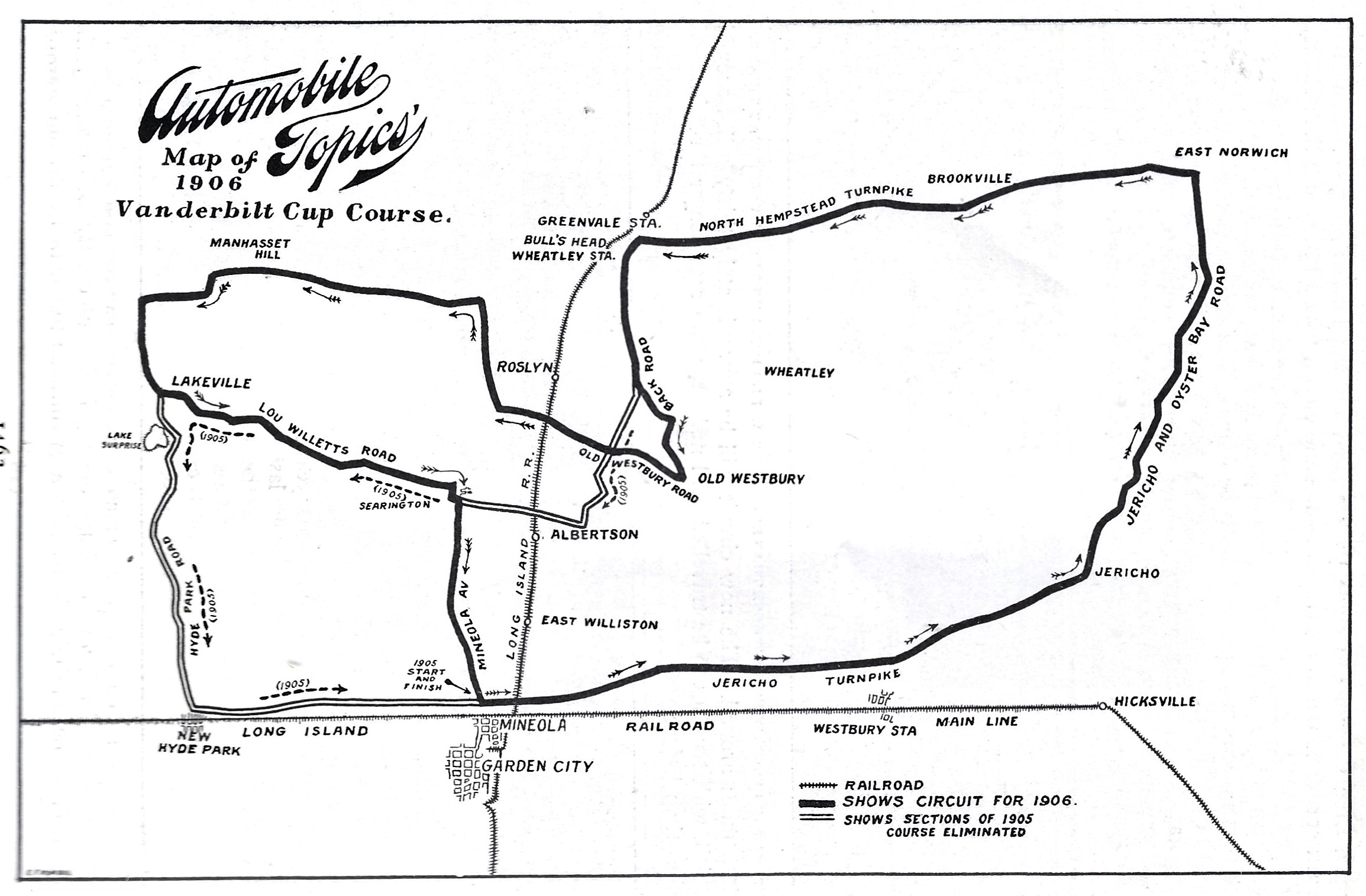
The course for 1906 was similar to the 1905 course but differed in that the commission wanted to avoid the new trolley tracks laid on Jericho Tpke late in 1905. The 1905 south eastern section was removed, and a new northeastern section was added into Manhasset.
The 1906 course still included the difficult southward Bull's Head turn to avoid a necessary control point in village of Roslyn, but now included a difficult and tire-ravaging hairpin turn at Wheatley Road and Old Westbury Road in Old Westbury.
The 1906 Hairpin Turn

The Hairpin Turn was one of the most popular spots to view the 1906 Cup Race. This panoramic shot shows the thousands who thought this would be an ideal viewpoint of the race.
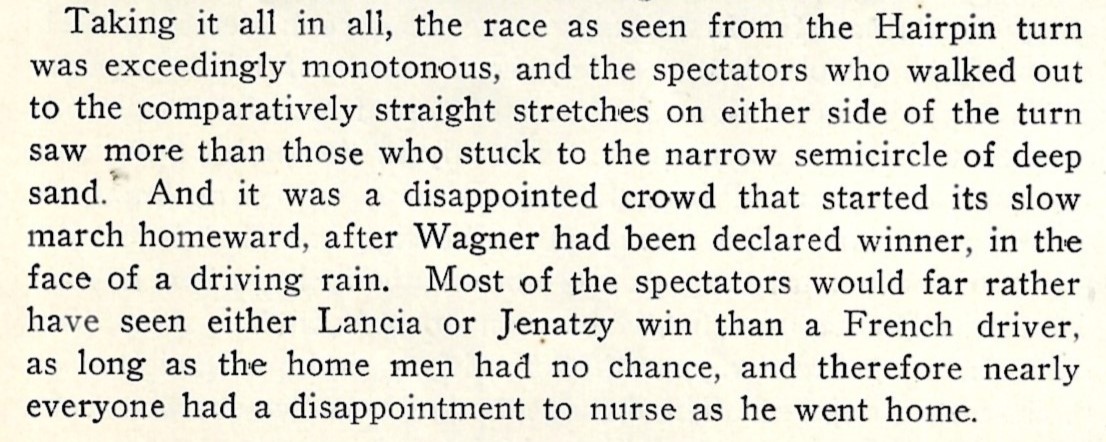
However, this October 11, 1906 article in 'The Automobile' says the publication, and the crowd, may have felt differently after the race. Stating the location at the turn was 'exceedingly monotonous' and that viewing from the straightaways before and after the turn would have provided more entertainment due to the deep sand of the narrow turn.
The Bull's Head Turn and the Road to the Hairpin Turn
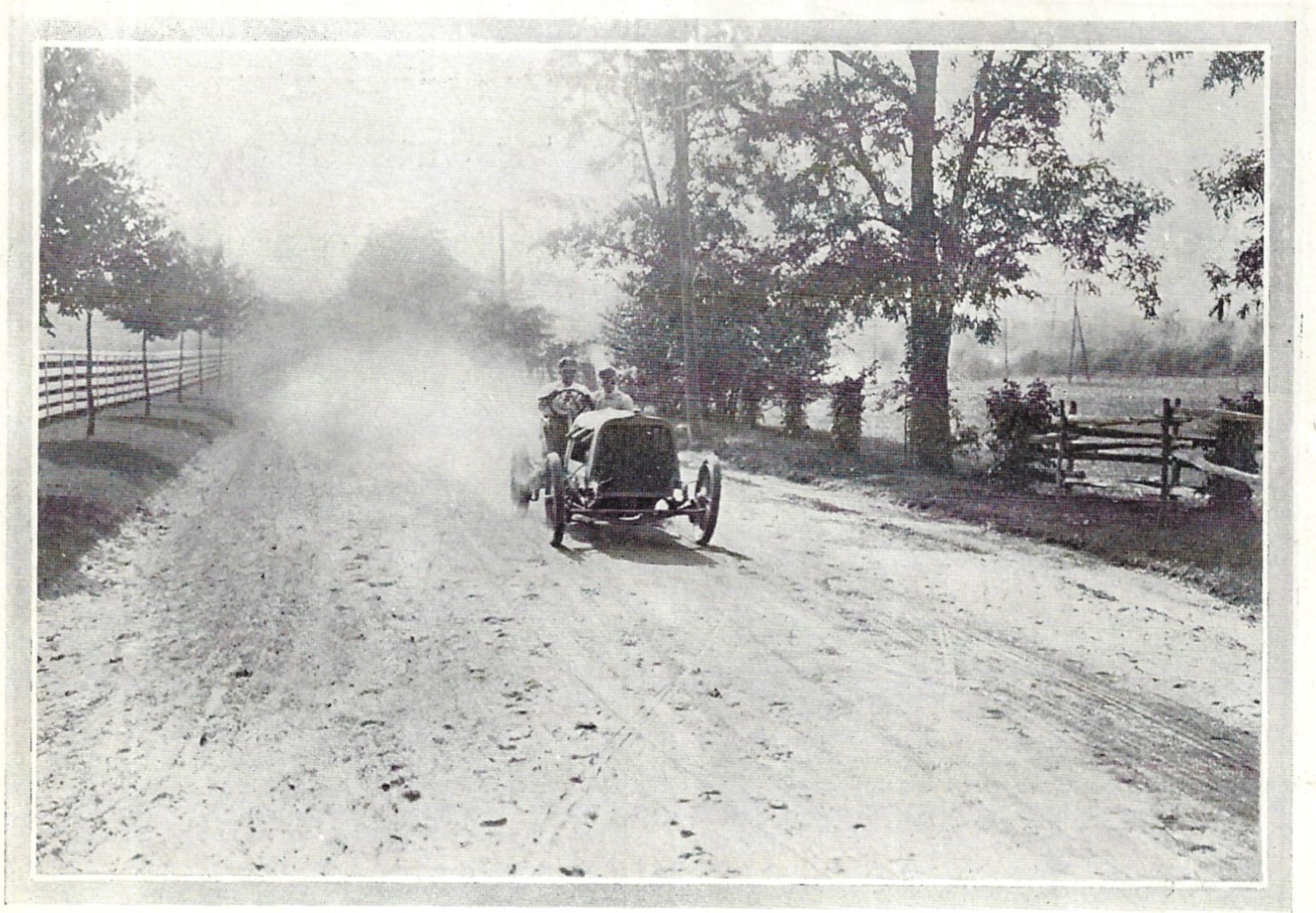
The Bull's Head Hotel became the namesake of the 1905/06 difficult turn which is the intersection now known as Northern Blvd and Glen Cove Road. In 1905/06, Glen Cove Road was known as Guinea Woods Road, (a small section named as such is reflected by the street signs at the Long Island Expressway overpass).
Racers like Herb Lytle seen practicing here in his 120 H.P. Pope-Toledo would turn left off of Northern Blvd, pass Clarence Mackay's Harbor Hill on their right, William C. Whitney and William Stow’s property to the left, and veer left a mile down the road onto what was then simply known as 'Back Road', later known as Hastings Lane, and now Red Ground Road.
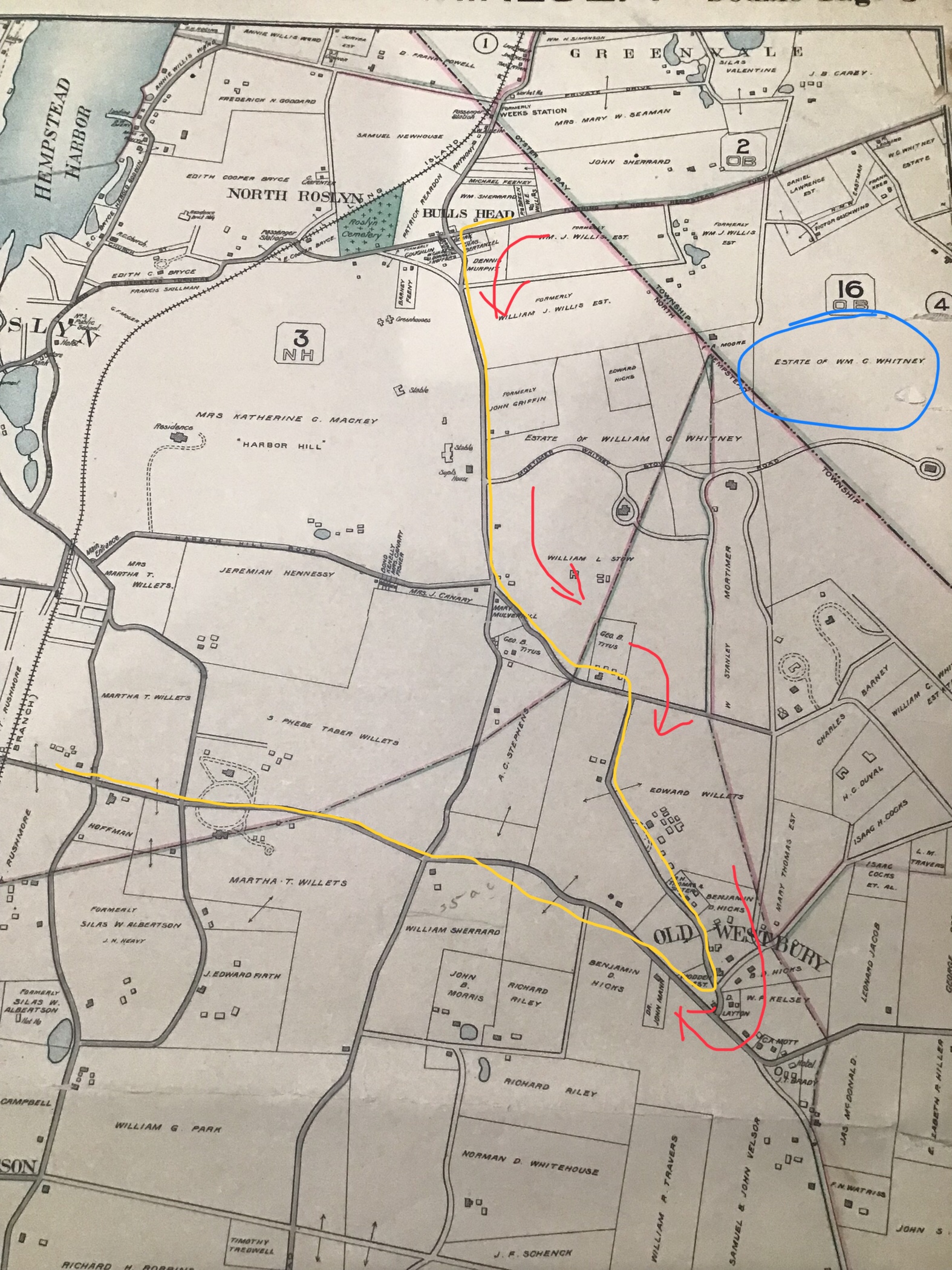
This 1906 Belcher Hyde map shows Back Road after it veers left from Guinea Woods/Glen Cove Rd leading to the Old Westbury Hairpin Turn.
Course in yellow, red arrows denoting direction of travel.
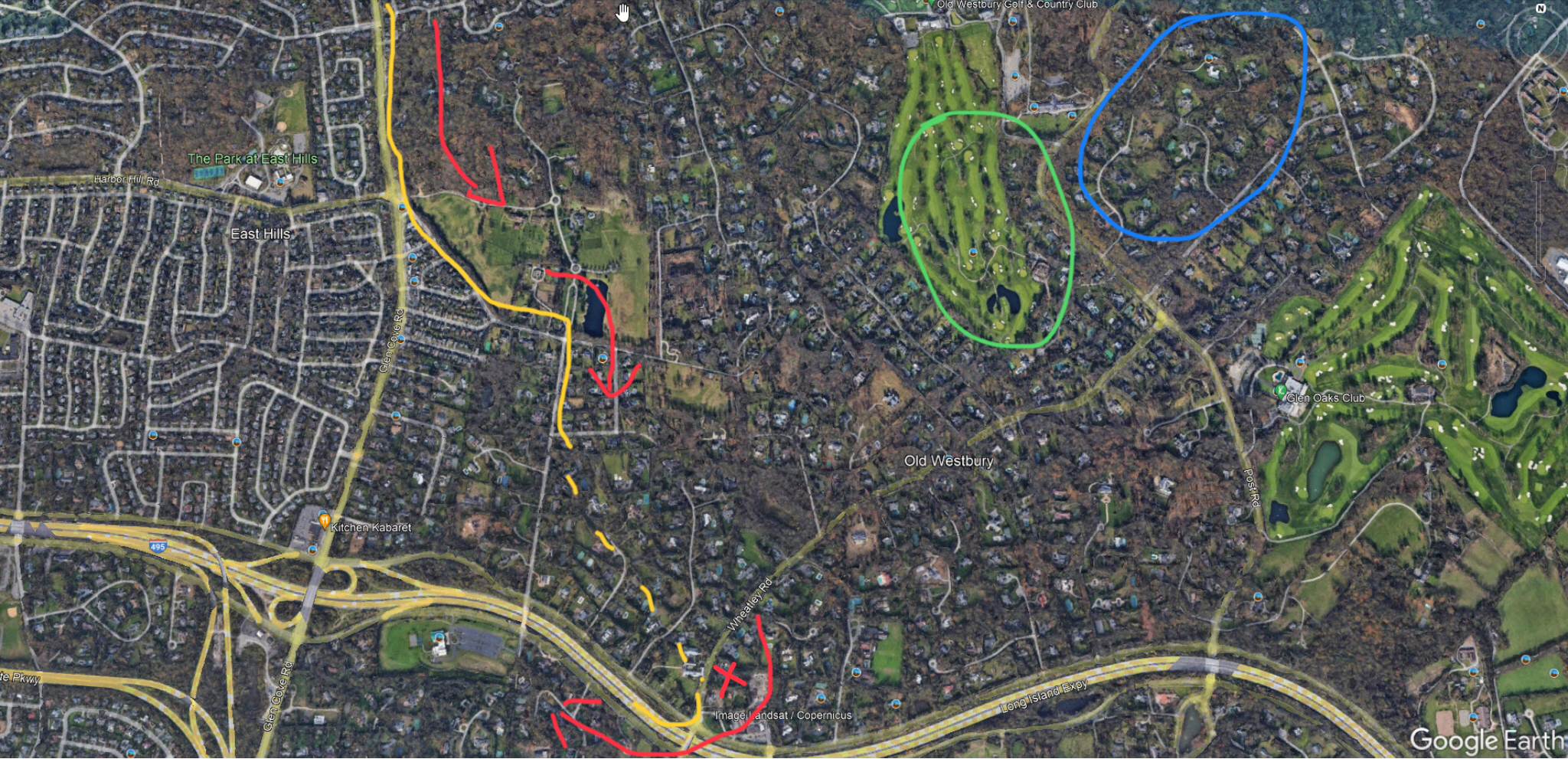
This current Earth view shows the multitude of changes since 1906. Back Road has now become Red Ground Road and no longer sweeps left heading towards what was then the Old Westbury hairpin. Instead, Red Ground Road now goes straight to the Long Island Expressway where it terminates at the eastward service road.
The dashed yellow line shows the original route of Back Road through the neighborhood on the current view.
Other notable landmarks are the green circle of the W. C. Whitney estate grounds, and the blue circle of the E.D. Morgan estate grounds to the east. The red 'X' denotes the landmark house at #1 Wheatley Rd seen in many of the Cup Race photos
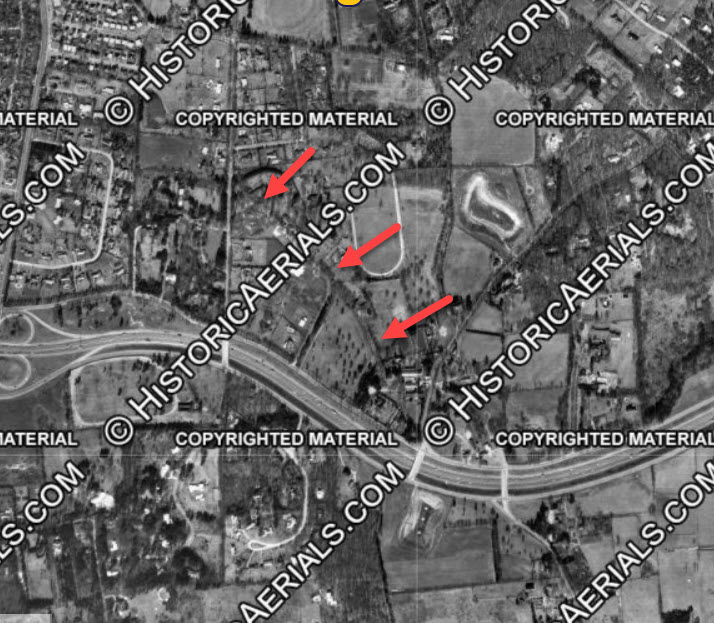
Back Road in this area disappeared by the late teens/early 20's according to other maps of the area, and the roads that did stay had changed names a few times (Hastings Road, State Road) before landing on Red Ground Road of today
This 1966 aerial still shows the remnants of Back Rd through neighborhood which is completely gone today.
#1 Wheatley Road on the Hairpin
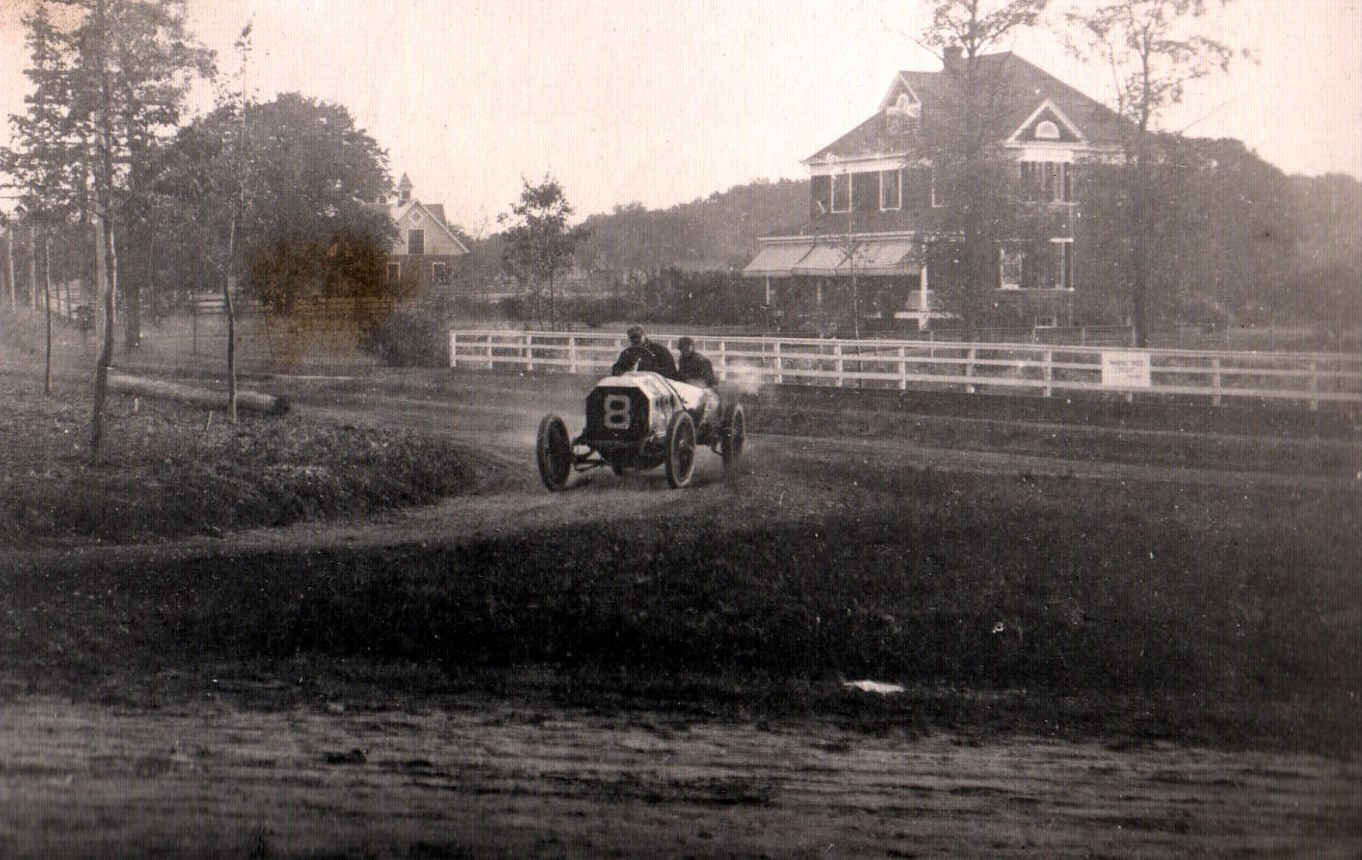
Subject of last weekend's mystery photo, Felice Nazarro in his #8 FIAT passing the #1 Wheatley Road landmark seen on the hairpin in many photos and films of the 1906 race.
The above panoramic photo was taken from the upper floor of the residence.
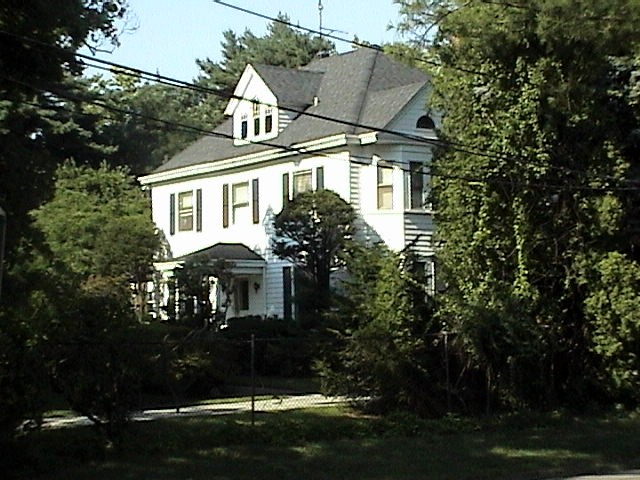
#1 Wheatley Road as seen in 2003. Sadly, this Vanderbilt Cup Race landmark was demolished for a new home in 2017.
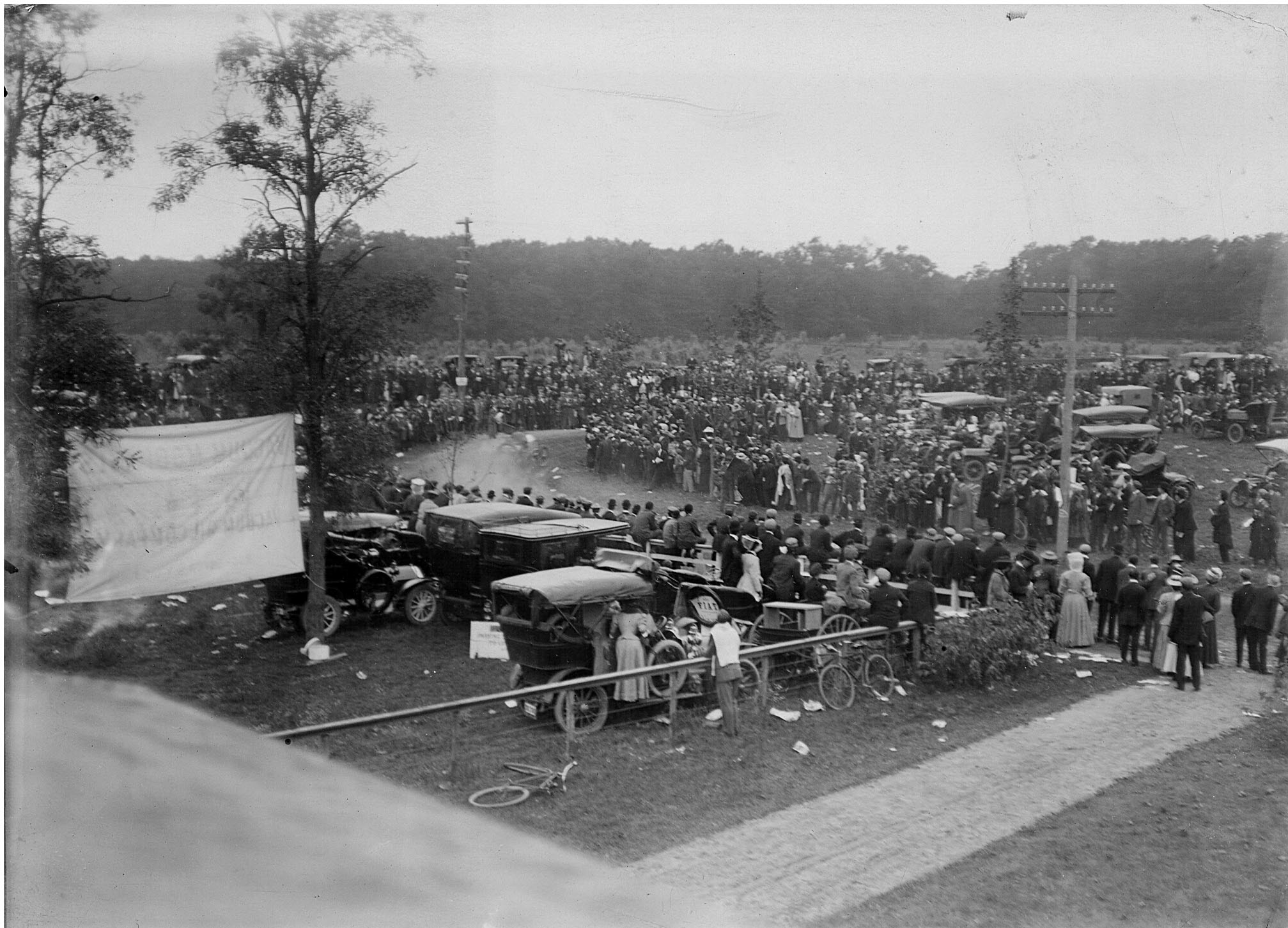
Another view of the Hairpin Turn from the second floor of #1 Wheatley Road.
Old Westbury Road straightaway from the Hairpin Turn
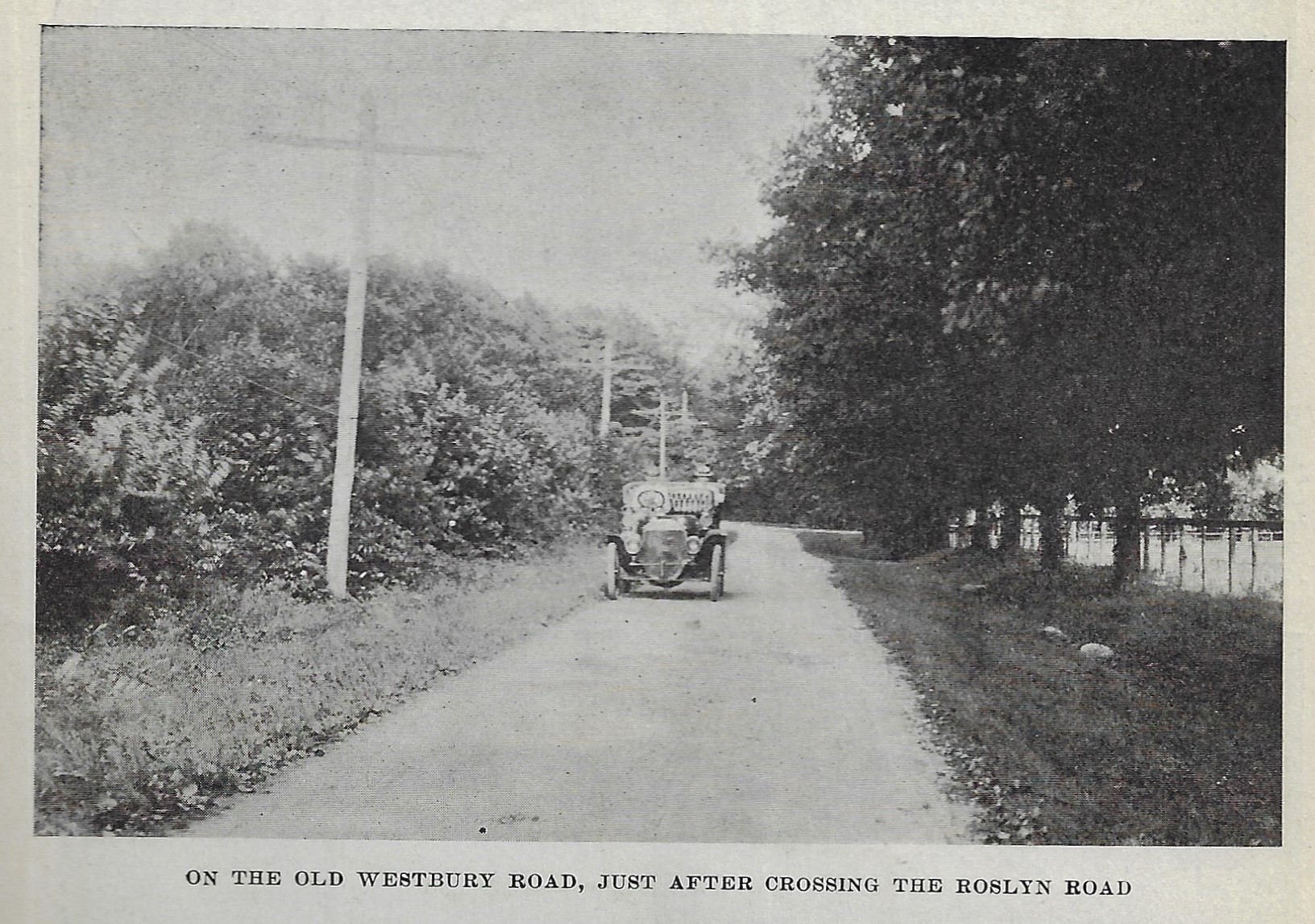
Exiting the Hairpin Turn placed the racers on Old Westbury Road where a busy Diamond Tire station was busy changing damaged tires from the turn. Old Westbury Road would eventually become the west service road for the expressway and is still known as such on current maps. This 1906 photo shows an auto on Old Westbury Road just passing Roslyn Road approaching the Long Island Railroad trestle.
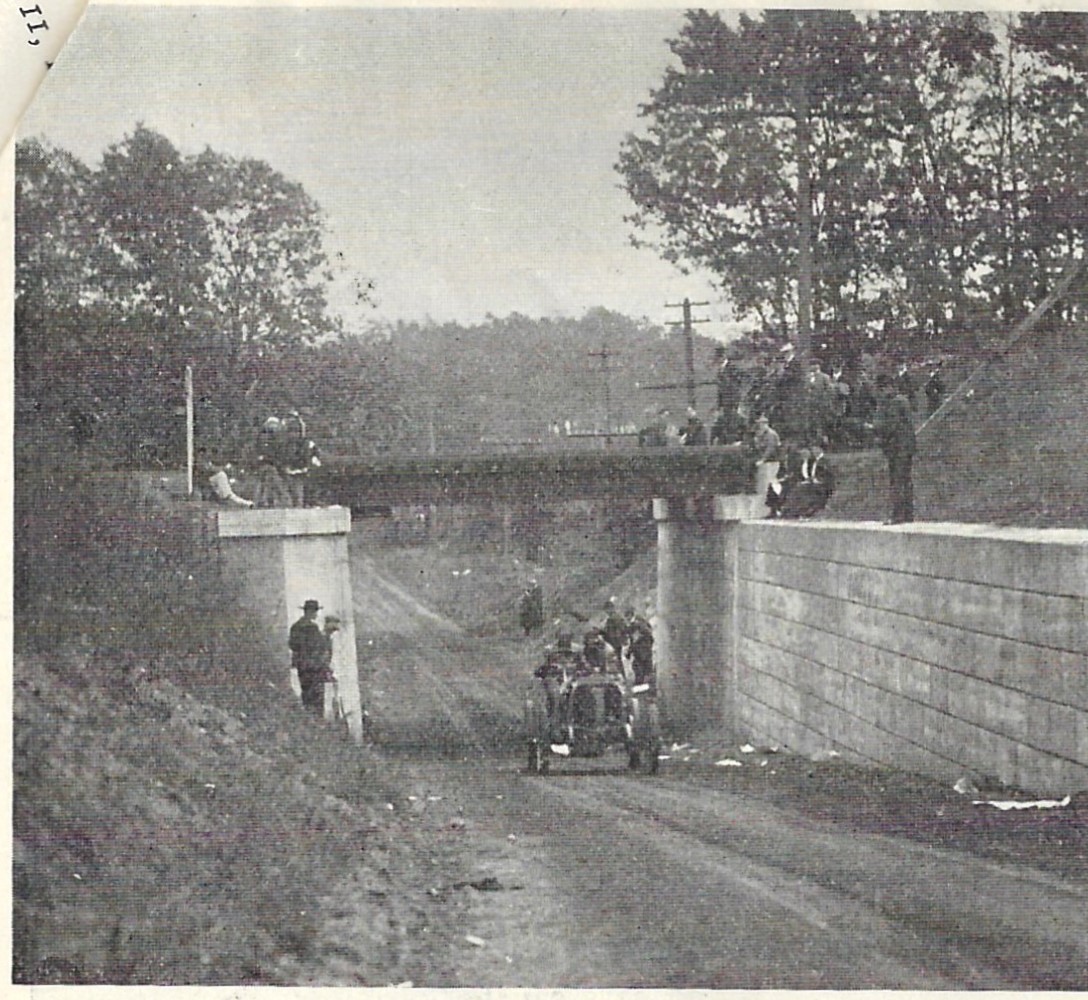
Hubert Le Blon traveling under the railroad trestle on Old Westbury Road.
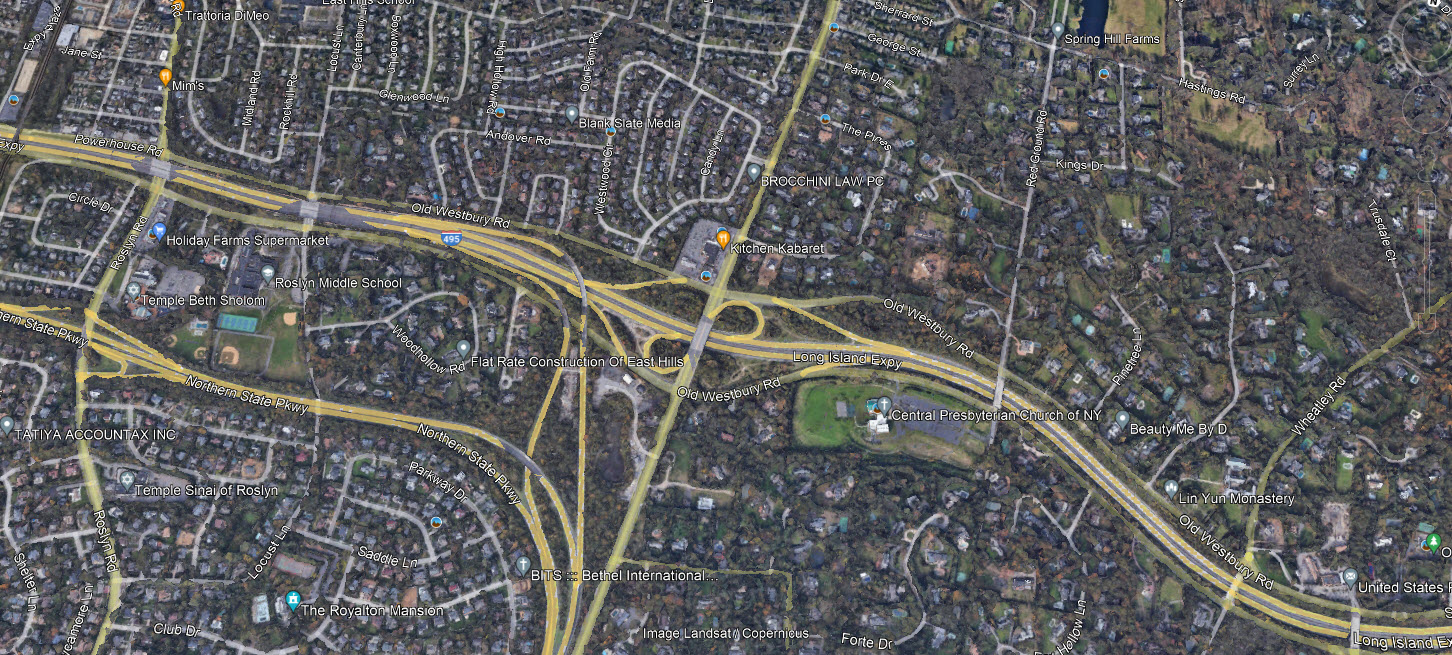
Current Google Earth showing the LIE service road as its original Old Westbury Rd name changing to Powerhouse Road at Roslyn Road just before the railroad trestle.
Film of the 1906 Vanderbilt Cup Race. Felice Nazzaro driving the #8 FIAT at the Hairpin Turn can be seen at the 0.53 second mark.
The 1906 Hairpin Turn Americarna interview with Howard Kroplick with Ray Evernham..





Comments
Well, that cleared up all of my confusion as to how the race course made it from Guinea Woods Road to Wheatley Road. Nice research. Thank you for the thorough explanation. I lived at 30 Wheatley Road 20 years ago. The property was the former polo field for the Grace Estate. I would have appreciated knowing the history of the cup race each time that I turned out of the driveway.
I know, enough with my screenshots lol : ) The section angling southeast towards Wheatley & Old Westbury Rd is evident in 1950. Then bird’s eye views of that area today and of the intersection of Wheatley & Post Rds. Building just south of Morgan Dr is owned by the Village of Old Westbury. On Streetview, it’s brick and doesn’t appear to be a residence.
Brian. I appreciate the screen shots. I think that the brick building is one of the Old Westbury Water Dept. well buildings.
Mark- It is. Stopped by after leaving Howard’s earlier.
Also, passed by the new (2017) house at #1 Wheatley Rd. for the last photo.
I wonder if 100 years from now anyone will ponder whether #1 Wheatley Road is the original house at the hairpin turn of the 1906 Vanderbilt Cup Race. Will there be access to VanderbiltCupRaces.com?
Mark, I believe the quest to know what existed before present-day will always draw interest for some, but not all. 100 years from now the present landscape will change again, further drawing new interests, and for later generations to come….